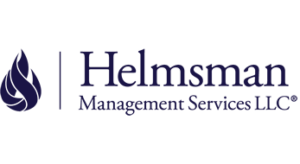
Our planning guide can be helpful as you look to reopen or expand operations. Remember to always adhere to federal, state, and local requirements, CDC guidelines, and recommendations of in-house counsel.
Due to the rapidly evolving nature of exposure, we recommend that your organization appoints a manager to coordinate efforts for COVID-19 response.
Reopening considerations
Operations
- Follow CDC, state, and local health department guidelines for cleaning, disinfecting, and guidance on maintaining physical distance.
- Follow CDC guidance to educate the workforce on staying healthy. Learn about the symptoms that would warrant staying home if sick.
- Keep websites and social media up to date with information including the right to refuse service to anyone exhibiting symptoms of COVID-19 and those who are not following appropriate social distancing guidelines.
- Reinforce communications by posting signs notifying customers of the following:
- Not to enter if they feel sick
- Etiquette surrounding coughing and sneezing
- Proper hand-washing hygiene
- Use of face coverings in accordance with local public health recommendations
- When re-opening buildings, work with maintenance to assess the HVAC system, change air filters, and if possible, increase the air exchange.
- Consider limiting hours of operation and implementing separate operating hours for elderly and other vulnerable customers.
- Monitor capacity limits of your operation in accordance with current state and local regulations for building occupancy.
- Organize an effective queuing approach to accommodate physical distancing for customers at checkout counters and store entrances.
- Frequently clean commonly used spaces (shopping carts, credit card machines, door handles, restrooms, changing rooms, etc.).
- Consider customer store routing by making narrow aisles one-way only.
- Plan and stagger stocking and deliveries to prevent customer contact and overcrowding of the facility.
- Limit on-site vendors to essential personnel only.
- Establish contactless signatures for deliveries.
- Analyze and modify your store return policy to allow for proper cleaning and disinfecting of products.
Staff safety
- Follow the CDC guidelines for approved cleaning products and appropriate cleaning and disinfecting techniques.
- Equip staff with proper personal protective equipment (PPE) based on job tasks and follow state and local public health recommendations regarding the use of face coverings. Ensure maintenance is properly trained on changes to cleaning and disinfecting protocols.
- Address employee health and wellness by fielding questions and concerns, providing frequent breaks, and opening communication channels.
- Follow the CDC and state guidelines reminding associates who feel sick to stay home.
- Post signage in employee areas with reminders about proper hygienic practices and hand washing.
- Implement social distancing in break rooms, meetings, and other gathering places.
- When handling paper currency and coins:
- Do not touch face afterward.
- Require cash to be placed directly on counter.
- Communicate with your workforce, offering opportunities for feedback.
Customer safety
- Post signs at entrances notifying customers not to enter if they feel sick.
- Provide hand sanitizer and disinfectant wipes for customer use.
- Increase cleaning and disinfecting frequency in high-touch areas, such as restrooms, changing rooms, checkout counters, elevators, and escalators, etc.
- Place marks on floors to encourage physical distancing.
- Encourage customers to use touchless payment options when available.
- Wipe counter between each customer at checkout stations.
Conclusion
It is important to communicate to employees and customers about the steps you are taking to help keep them safe, and acknowledge the importance of the work the employees are doing.
Capture and document your programs and efforts to keep everyone safe for future reference.
Featured insights
This website is general in nature and is provided as a courtesy to you. Information is accurate to the best of Helmsman Management Services’ knowledge, but companies and individuals should not rely on it to prevent and mitigate all risks as an explanation of coverage or benefits under a policy or service contract. Consult your professional advisor regarding your particular facts and circumstance. By citing external authorities or linking to other websites, Helmsman Management Services is not endorsing them.





